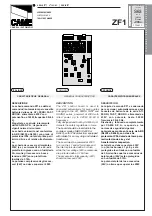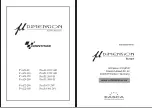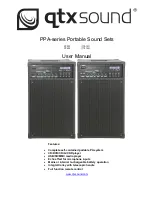
Call Waiting
A feature that lets standard phone users receive
notification of a second incoming call when they are
busy on a call. The user can press the switchhook
to put the first call on hold and answer the second
call.
Caller ID
A feature that displays an incoming caller’s number
(or name) on a system display phone. To get Caller
ID, you must subscribe to the service (if it is
available) from your local phone company and
connect Caller ID lines to the appropriate system
modules.
Caller ID Inspect
A feature that allows you to view incoming Caller ID
information on other lines while active on a call,
without placing the call on hold or hanging up.
Caller ID Name/Number
A feature that allows you to toggle between a
caller’s Caller ID name and Caller ID number.
Caller ID service
A subscription service available from some local
telephone companies, providing the telephone
number and/or name of the caller on lines that have
the service.
Calling Group
A group of extensions that can be called
simultaneously by dialing a group calling code.
See also Hunt Group.
Calling restriction
A feature that lets you control telephone use at
specific extensions.
Centralized Telephone Programming
A method of telephone programming that lets you
program individual extensions in the system from a
system display phone at extension 10 or extension
11. Centralized Telephone Programming is an
alternative to Extension Programming.
CO Line
See Line.
Combination extension
An extension that has two devices connected to it.
Combination extensions can connect two standard
devices or a standard device and a system phone,
but not two system phones.
Contact Closure button
A phone button that is programmed to activate one
of the two Contact Closures on the Contact Closure
Adjunct to control an auxiliary device such as a
door lock.
Control unit
Made up of a PARTNER ACS processor module,
and, optionally, a 2-Slot or a 5-Slot molded plastic
carrier to hold additional system modules. The
5-Slot carrier also has a cover. The control unit
connects lines coming into your building to the
extensions in your system, and also provides
system features.
D
DGC Group
See Group Call Distribution and Hunt Group.
Doorphone
A Lucent Technologies proprietary phone that can
be wall mounted outside your office or in a lobby to
allow visitors to alert any number of system
extensions by pressing a button. The doorphone
includes a speaker and microphone, to allow
two-way conversation between the doorphone and
the phone that answers.
Do Not Disturb
A feature that prevents incoming calls from ringing
at an extension.
See also Send All Calls.
E
Extension
An endpoint in the system (numbered 10–41) that
connects telephones or standard devices, which
can be dialed using the
i
button.
See also
Extension jack
The location on a PARTNER ACS processor module
and 206 modules that allows you to connect
extension wiring to the control unit for phones (or
other telecommunications devices).
Extension number
The number assigned to each extension jack on a
PARTNER ACS processor module or a 206 module.
Extension numbers run consecutively from 10
through 41 and are used for intercom calling.
GL-2
Glossary
Summary of Contents for PARTNER Advanced Communications System Release 1.0
Page 6: ...iv...
















































